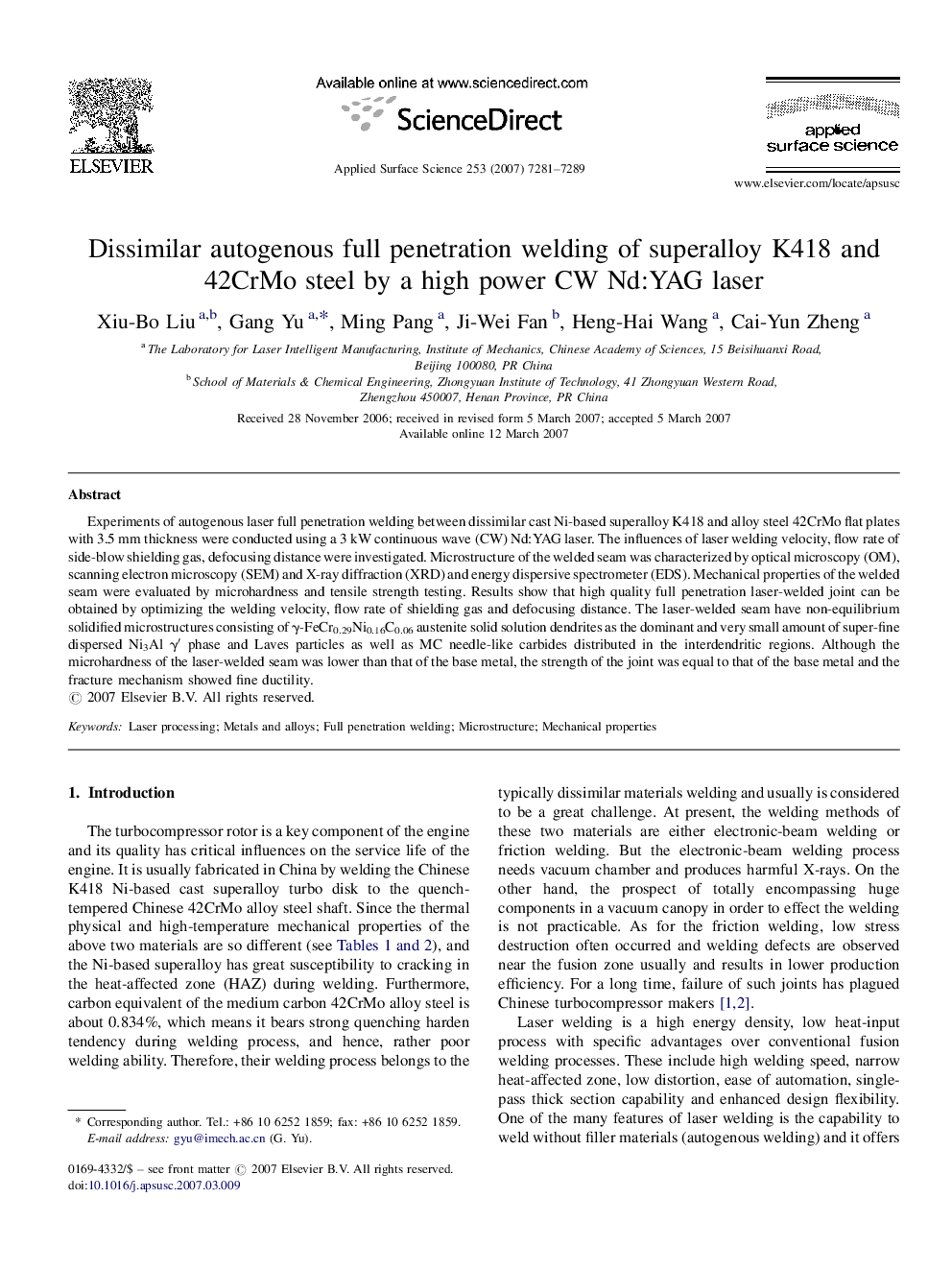| Article ID | Journal | Published Year | Pages | File Type |
|---|---|---|---|---|
| 5368454 | Applied Surface Science | 2007 | 9 Pages |
Experiments of autogenous laser full penetration welding between dissimilar cast Ni-based superalloy K418 and alloy steel 42CrMo flat plates with 3.5 mm thickness were conducted using a 3 kW continuous wave (CW) Nd:YAG laser. The influences of laser welding velocity, flow rate of side-blow shielding gas, defocusing distance were investigated. Microstructure of the welded seam was characterized by optical microscopy (OM), scanning electron microscopy (SEM) and X-ray diffraction (XRD) and energy dispersive spectrometer (EDS). Mechanical properties of the welded seam were evaluated by microhardness and tensile strength testing. Results show that high quality full penetration laser-welded joint can be obtained by optimizing the welding velocity, flow rate of shielding gas and defocusing distance. The laser-welded seam have non-equilibrium solidified microstructures consisting of γ-FeCr0.29Ni0.16C0.06 austenite solid solution dendrites as the dominant and very small amount of super-fine dispersed Ni3Al γⲠphase and Laves particles as well as MC needle-like carbides distributed in the interdendritic regions. Although the microhardness of the laser-welded seam was lower than that of the base metal, the strength of the joint was equal to that of the base metal and the fracture mechanism showed fine ductility.
